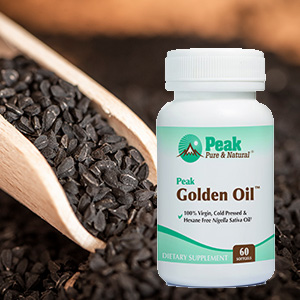Get Easy Health Digest™ in your inbox and don’t miss a thing when you subscribe today. Plus, get the free bonus report, Mother Nature’s Tips, Tricks and Remedies for Cholesterol, Blood Pressure & Blood Sugar as my way of saying welcome to the community!
Why the Coronavirus is so hard to contain

It seems that in just the past few days the level of threat we face in the U.S. from Coronavirus has risen sharply.
Why?
Well, according to the experts, had we been able to stop the epidemic-level spread of the virus at the Chinese border, we had a chance.
Yet, once additional countries experienced the same issue (COVID-19 has sickened 90,000 people and spread to more than 70 countries and territories) community spread of Coronavirus in the United States became not only likely but inevitable.
And of course, as well all know, that has happened…
Last week, both California and Washington State saw the first cases of Coronavirus infection whose source can’t be traced. In other words, they don’t know how the latest patients got the virus since they have no ties to someone who has already been diagnosed, haven’t recently traveled to China, nor do they have any other obvious reasons for contracting it.
Since we became aware of this “community spread” in the states, the number is up to 100 cases in 15 states and the death toll stands at nine.
Why has Coronavirus been so hard to contain?
Well, the answer may actually bring at least a small ray of sunshine to an otherwise grim conversation…
Comparing coronaviruses
The scientists say that the answer to the question of why the spread of Coronavirus appears inevitable lies in how it differs from similar viruses we’ve seen in the past – namely SARS and MERS.
SARS (severe acute respiratory syndrome) and MERS (Middle East respiratory syndrome) are also versions of coronaviruses and therefore have been looked at extensively in order to analyze what we may be facing with this latest threat.
And, here’s where the good news comes in…
Coronavirus is far less deadly than both of its cousin viruses.
Both SARS and MERS, which were picked up from animals originally are highly fatal to humans, with very few of the cases being mild or asymptomatic.
In fact, the experts point out that had there been many people with the milder version, both of these viruses would have experienced far more rapid spread, thus killing many more.
On the other hand, if you end up getting the latest Coronavirus — COVID-19 — you have a pretty good chance of getting sick but not dying, which is the good news.
Unfortunately, that’s also where the good news ends and the spread begins…
Infecting lots more people than SARs and MERs
Since more people with Coronavirus may experience mild symptoms or possibly even no symptoms at all, they’re more likely to transmit the virus to the people around them.
After all, if they’re not confined to bed (or the hospital) with a severe form of the illness, they could be up walking around, sitting on an airplane to fly to the next state or another country, or standing in line behind you at the grocery store.
Related: What your risk of getting seriously sick with coronavirus looks like
In all, SARs and MERs killed fewer than 1,000 people, each. But COVID-19 is a numbers game… infecting many more and already killing more than twice that number.
That’s exactly why Coronavirus is so difficult — if not impossible — to contain.
That’s also exactly why top health officials, including the CDC, are warning Americans about community spread — and as we’ve seen, it’s happened in 15 states now.
Coronavirus compared to the flu
And, while we did just point out that Coronavirus is far less deadly than both SARS and MERS both, we also don’t want to downplay its threat.
Each year, the flu kills a huge number of people in the U.S. In fact, the 2014-2015 season claimed approximately 51,000 lives while 2017–2018 saw 61,000 die.
Peak Golden Oil™
Helps support immune health with 100% organic, hexane free, cold pressed black seed oil.
Yet, in comparison, COVID-19 is 20 times more deadly than the flu, as Dr. Sanjay Gupta shared with CNN viewers last week.
So, even though it’s far less fatal than other coronaviruses, it has the potential to gain a serious foothold in our country. A glimmer of good news is that China’s daily rate of new infections is falling, showing it will be possible to contain the disease.
The time to begin readying ourselves and our families for Coronavirus in the U.S. is now. The single biggest piece of advice experts have offered is to wash your hands often (for at least 20 seconds with soap and water) and avoid touching your face.
It may be wise to avoid crowds and stay home if sick — but see the doctor if needed.
It’s not time to panic but instead to simply take the steps needed to be ready. And, hopefully, we will all be able to look back and say we were over-prepared rather than caught off guard.
Sources:
- Not A Question Of If But When: CDC Warns Americans To Prepare For Disruptive Coronavirus Outbreak — Kaiser Health News
- CDC warns Americans of ‘significant disruption’ from coronavirus — ABC News
- CDC: 80,000 people died of flu last winter in U.S., highest death toll in 40 years — STAT
- Coronavirus is spreading–but the flu is a greater threat to Americans — TheHill
- CDC: 1,800 Deaths Already From Influenza, How Does The Flu Kill? — Forbes
- Spread of coronavirus in U.S. appears inevitable, health officials warn, as Trump defends response — Washington Post
- “We are at a turning point”: The coronavirus outbreak is looking more like a pandemic — Vox
- New Unexplained Cases Reported in Oregon and California — The New York Times
- Coronavirus Spreads to More Than 100 Countries. Here’s the Latest — Time
- You’re Likely to Get the Coronavirus — The Atlantic
- Gupta on Trump’s coronavirus claim: That’s not true — CNN
- Coronavirus death toll rises to 9 in Washington state–CBS News













